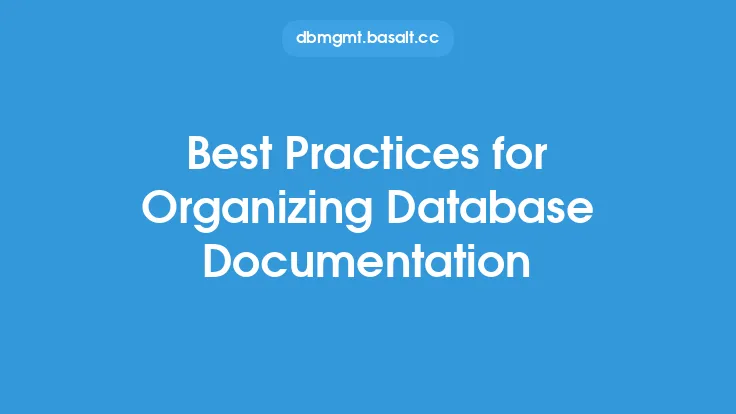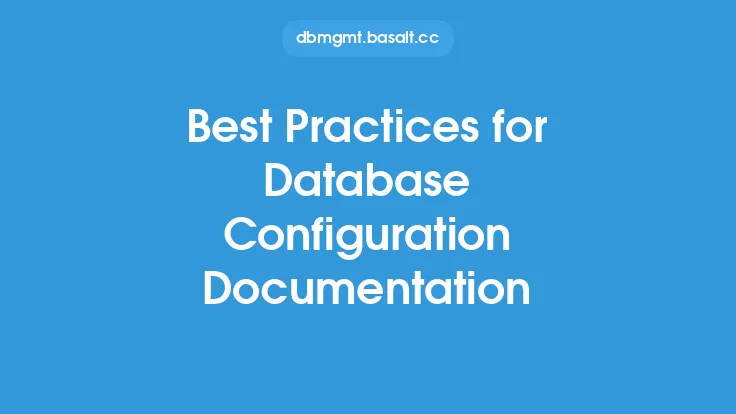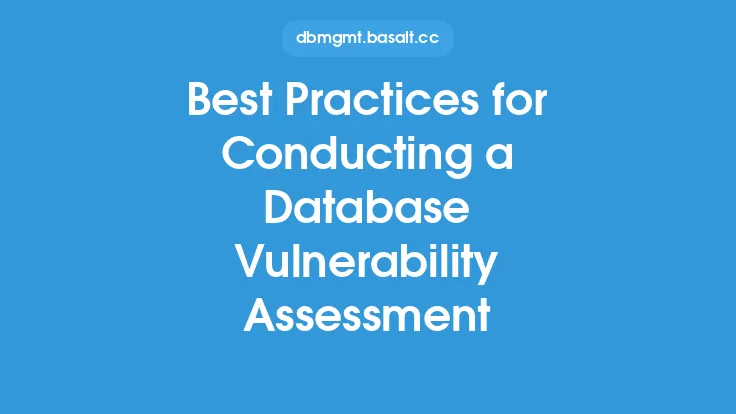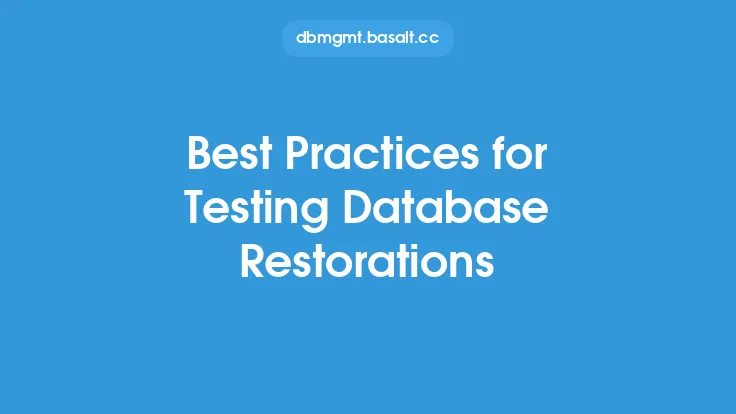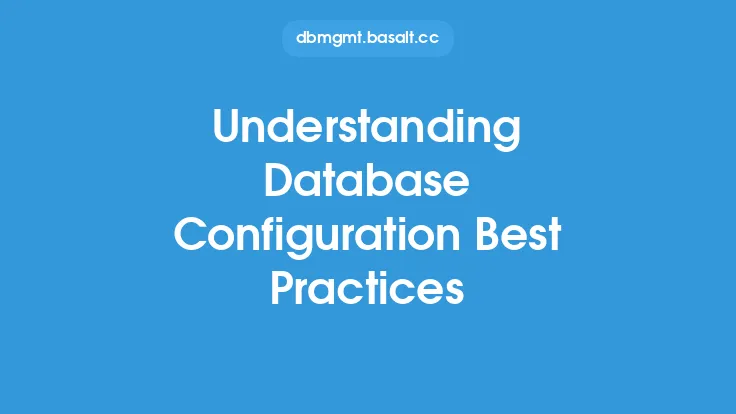Database documentation is a critical aspect of database administration, as it provides a clear understanding of the database structure, relationships, and dependencies. It serves as a single source of truth for database developers, administrators, and users, ensuring that everyone is on the same page. In this article, we will delve into the best practices for creating and maintaining effective database documentation.
Introduction to Database Documentation
Database documentation is a comprehensive collection of documents that describe the database schema, tables, relationships, indexes, views, stored procedures, and other database objects. It provides a detailed understanding of the database architecture, data models, and the relationships between different data entities. Effective database documentation is essential for ensuring data integrity, reducing errors, and improving overall database performance.
Database Documentation Components
A well-structured database documentation should include the following components:
- Database schema: A detailed description of the database structure, including tables, relationships, and indexes.
- Data dictionary: A collection of metadata that describes each data element, including data types, formats, and descriptions.
- Entity-relationship diagrams: Visual representations of the relationships between different data entities.
- Table and column descriptions: Detailed descriptions of each table and column, including data types, formats, and constraints.
- Index and constraint descriptions: Detailed descriptions of each index and constraint, including their purpose and implementation.
- Stored procedure and function descriptions: Detailed descriptions of each stored procedure and function, including their purpose, parameters, and return values.
- View descriptions: Detailed descriptions of each view, including their purpose, columns, and dependencies.
Database Documentation Standards
To ensure consistency and accuracy, it is essential to establish database documentation standards. These standards should include:
- Naming conventions: A set of rules that govern the naming of database objects, such as tables, columns, and indexes.
- Data formatting: A set of rules that govern the formatting of data, such as date and time formats.
- Documentation templates: A set of templates that provide a consistent structure for documenting database objects.
- Version control: A system for tracking changes to the database documentation, including version numbers and change history.
Database Documentation Tools
There are several database documentation tools available, including:
- Data modeling tools: Tools that provide a visual representation of the database schema, such as Entity-Relationship diagrams.
- Documentation generators: Tools that automatically generate database documentation based on the database schema.
- Wiki-based tools: Tools that provide a collaborative platform for creating and maintaining database documentation.
- Version control systems: Tools that track changes to the database documentation, including version numbers and change history.
Best Practices for Creating Database Documentation
To create effective database documentation, follow these best practices:
- Keep it up-to-date: Regularly update the database documentation to reflect changes to the database schema.
- Keep it concise: Avoid unnecessary detail and focus on providing a clear understanding of the database structure and relationships.
- Use standard terminology: Use standard terminology and naming conventions to ensure consistency and accuracy.
- Use visual aids: Use visual aids, such as diagrams and charts, to provide a clear understanding of complex relationships and dependencies.
- Make it accessible: Make the database documentation easily accessible to all stakeholders, including developers, administrators, and users.
Database Documentation and Data Governance
Database documentation plays a critical role in data governance, as it provides a clear understanding of the database structure and relationships. Effective data governance ensures that data is accurate, complete, and consistent, and that it is properly secured and protected. Database documentation helps to ensure data governance by providing a single source of truth for database developers, administrators, and users.
Database Documentation and Compliance
Database documentation is also essential for ensuring compliance with regulatory requirements, such as GDPR and HIPAA. These regulations require organizations to maintain accurate and complete records of their data, including database schema and relationships. Database documentation provides a clear understanding of the database structure and relationships, ensuring that organizations can demonstrate compliance with regulatory requirements.
Conclusion
In conclusion, database documentation is a critical aspect of database administration, providing a clear understanding of the database structure, relationships, and dependencies. By following best practices for creating and maintaining effective database documentation, organizations can ensure data integrity, reduce errors, and improve overall database performance. Effective database documentation is essential for ensuring data governance and compliance, and it provides a single source of truth for database developers, administrators, and users.
